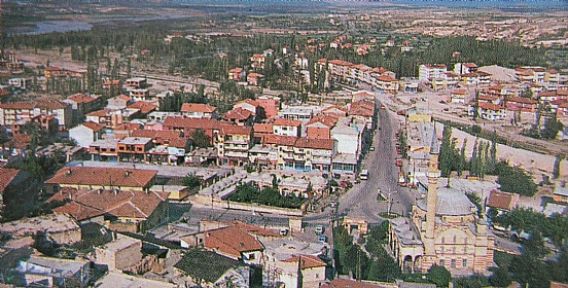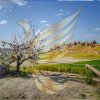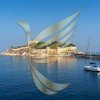Gulsehir is arranged on the southern bank of the Red River (Kizilirmak) and in antiquated occasions it was designated “Zoropassos”. Afterward, during the Roman Empire the town was named as Arapsun. Present day Turkey names the city as Gulsehir which means Rose City. The footrest Grand Vezier Karavezir Mehmet Seyyid Pasha did likewise in Gulsehir as Damat Ibrahim Pasha did in Nevsehir and manufactured a kulliye in the town which had just 30 houses. This complex comprised of a mosque, a madrassa and a wellspring.
Aciksaray (Open Palace):
15 km outside Nevsehir, on the Nevsehir-Gulsehir street (highway 765), you will go over a betrayed cavern town with rock-cut homes and houses of prayer, to which the nearby occupants have as of late given the name Aciksaray (Open Palace). The town is momentous for its veneers and the odd-looking arrangements, some taking after gigantic mushrooms, trees, even human countenances.
Gulsehir, Aciksaray (Open Palace), CappadociaThis little settlement can be gone back to the tenth or eleventh hundreds of years. It covers a zone of one square kilometer and contains eight edifices accumulated around three-sided patios, each with a finished fundamental veneer.
The principal complex on the correct when you enter Aciksaray from the Nevsehir-Gulsehir street has extraordinary compared to other expound exterior in Cappadocia. The complex has two sporadic rooms and one rectangular, in which an enormous equivalent furnished cross is cut on the inside divider over the passageway. Their heads are lost, in light of the fact that a window-like opening has been cut on the divider. Just in Aciksaray, you will see the theme of the bull, viewed as holy by the Neolithic people group in Anatolia just as the Hittites.
St. Jean Church (Karsi Kilise)
The two story church of St. Jean, found after entering Gulsehir, houses a congregation, wine basement, graves, water channels and living quarters on the lower floor, and a congregation adorned with Biblical scenes on the upper floor. As indicated by the engraving on the apse, the congregation is dated to 1212.
St. Jean Church (Karsi Kilise) Frescoes, Gulsehir, CappadociaThe lower floor church is worked to the state of a cross, has one apse and arms of the cross are barrel-vaulted. The focal arch is crumpled. Adapted creatures, geometrical and cross structures are utilized to enrich the congregation in red ochre, which was applied legitimately onto the stone. The upper church has one apse, and is barrel-vaulted. Aside from those on the apse, the very much saved frescoes were canvassed in a layer of dark sediment. The congregation’s current state is a consequence of the rebuilding and protection done by Ridvan Isler in 1995.
Scenes from the life of Jesus and the Bible are as friezes inside the fringes. Yellow and dark colored have been utilized on a dark foundation. On the specialty vault and on the sides, flower and geometrical examples were utilized. On the west and south dividers the Last Judgment can be discovered, a scene once in a while delineated in Cappadocian places of worship.
Scenes of the St. Jean Church: Deesis on the apse, on its front the Annunciation, beneath that are feathered creature plans, on the barrel vault representations of holy people in emblems, on the south wing of the vault the Last Supper, Betrayal by Judas, Baptism, underneath Koimesis (Falling Asleep of Mother Mary), on the north wings of the vault Descent from the Cross, Women at the Tomb, Anastasis, on the West and South dividers the Last Judgment.







0 comments for this post